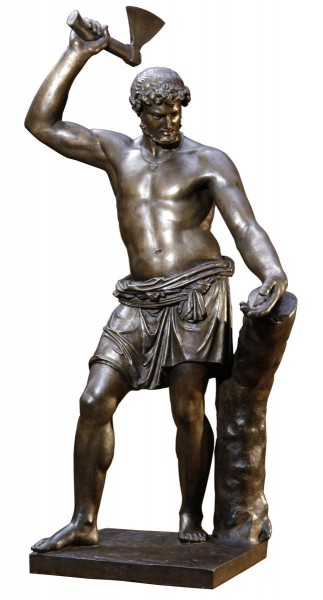Russian Scaevola
1813
- Bronze. 268 x 131 x 92
- Ск-1859
-
Сведения о реставрации:
Реставратор:: Крестовский И.В.
The sculptor portrayed the feat of an unknown peasant, who, according to a legend, was captured by the French during the war of 1812. The hero was particularly athletic and therefore he was taken to serve in the French army, and as a sign that he belonged to the Emperor Napoleon, he was branded with the initial "N". The peasant didn’t want to serve the enemies of his Fatherland, so he cut off his hand with an ax. Such courage caused respect from the enemy, and he was released.
The sculptor compares the act of this Russian peasant with the feat of the ancient Roman Gaius Mucius Scaevola, who in 508 BC sacrifices his hand in the name of saving the homeland. In accordance with the norms of classicism, the author ennobles the face of the hero: he has clayey features, his expression is calm, the body is composed harmoniously. Only a cross on his neck indicates that he is not an ancient warrior, but a Russian hero.

